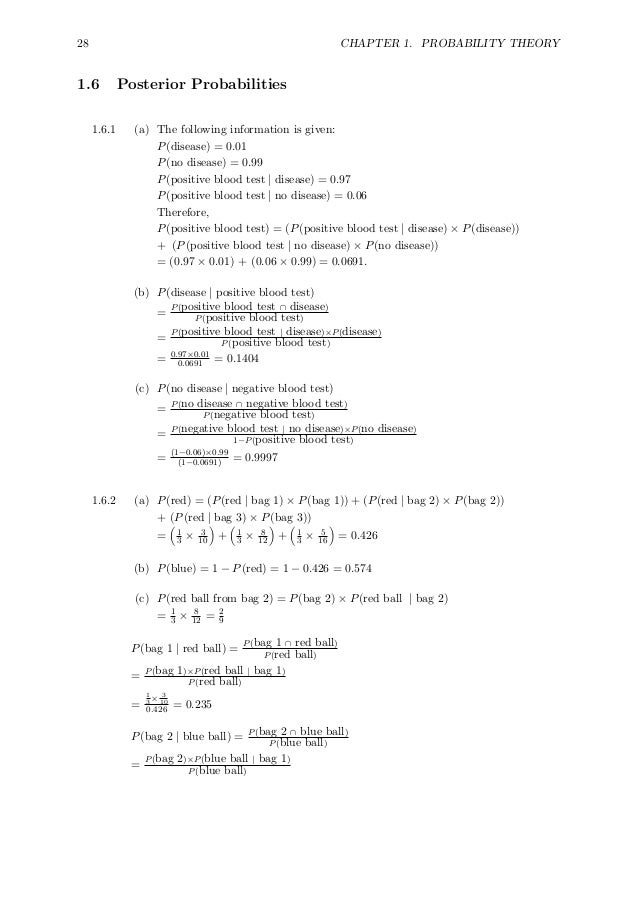Intro To Stats Deveaux 3rd Edition Answers


Intro STATS by Richard D de Veaux starting at $0.99. Intro STATS has 11. Same content as the student but may have answers/notes for. Intro Stats (3rd Edition). The De Veaux/Velleman/Bock Statistics Series Companion Website: Intro Stats 4 th Edition. Intro Stats Plus Student Solutions Manual (4th Edition) (9.
: ) Yeyyyy, this must be relaxing. I smiled at Murray's answer because of the fact i do no longer think of quiet may be a word my acquaintances or i might use to describe me and people have informed me I are available in the process quieter on line. I assume a logical end may be when you consider which you may no longer hear my voice. I ought to end rambling. Becki ~ The artsy, musical female.
She's have been given an exceedingly quirky flavor in song, dyes her hair ambitious colorings and has an exceedingly incredible trend experience. Livvy ~ She sounds like she may be the quiet youngster, yet all people may be deceived because of the fact she has an exceedingly diffused experience of sarcasm that makes me snort.
Serial Killer Chat Up Lines here. She'd in all probability be extra alongside the lines of a type clown. I ought to work out her entering into mischief with Mazzy.: ) Ah shoooooot. My pal is beeping her motor vehicle outdoors waiting for me. • Tell us some more • Upload in Progress • Upload failed.
Please upload a file larger than 100x100 pixels • We are experiencing some problems, please try again. • You can only upload files of type PNG, JPG, or JPEG. • You can only upload files of type 3GP, 3GPP, MP4, MOV, AVI, MPG, MPEG, or RM. • You can only upload photos smaller than 5 MB. • You can only upload videos smaller than 600MB. • You can only upload a photo (png, jpg, jpeg) or a video (3gp, 3gpp, mp4, mov, avi, mpg, mpeg, rm). • You can only upload a photo or a video.
• Video should be smaller than 600mb/5 minutes • Photo should be smaller than 5mb •.
Description Intro Stats, Third Edition extends the teaching innovations pioneered in the DeVeaux/Velleman/Bock books. Its focus on statistical thinking and modern practice are evident throughout. Each chapter opens with an example–and the data from that example are then displayed and analyzed to introduce new concepts. Graphics and summaries introduced in early chapters are used throughout the book, helping students become consistent statistical thinkers. Intro Stats, Third Edition has a fun, conversational writing style, real up-to-date data, hundreds of examples based on current events, and short, accessible chapters. The innovative Think/Show/Tell examples, pioneered in the first edition, now present new data and discussions. The new For Example sections illustrate each new concept or method with a brief, worked example.
This text covers all material typical in a one-semester statistics course, with supplemental chapters on analysis of variance (ANOVA) and multiple regression included on the book’s DVD-ROM. The text maintains its commitment to the recommendations of the ASA-endorsed GAISE (Guidelines for Assessment for Instruction in Statistical Education) Report. Datasets and other resources (where applicable) for this book are available. • The conversational writing style maintains student interest without sacrificing content. In this edition, the authors have further refined sections throughout the book to make the discussion even clearer. • The Part/Chapter organization divides the text into manageable pieces and places them so that each new concept fits comfortably with those that students have learned.
• Think, Show, Tell teaches students how to think about and work through each example. All worked examples start with a clear question, ask students to think about how to address the question, show the work they did to solve it, and tell their conclusion in the context of the original question. Worked examples have been brought up-to-date with new topics and data. • Just Checking: this edition contains even more Just Checking exercises within each chapter to ensure that students understand key ideas before moving on. Most involve very little calculation. Answers are provided at the end of the chapter. • What Can Go Wrong?
Sections at the end of every chapter help students avoid common errors and misconceptions in statistics. • By Hand boxes guide students through the calculation of a worked example, showing the mathematics behind the statistics. This text encourages the use of technology, but also recognizes the benefits of understanding how to perform calculations by hand. • What Have We Learned?
Sections at the end of each chapter highlight the concepts learned in the chapter, define new terms and identify where they were introduced, and list the skills that students should have acquired in their reading. This practical study guide ensures that students are fully prepared for exams. • ActivStats ® Pointers highlight concept videos, teaching applets, and animations in ActivStats that parallel the discussions in the book. • On the Computer sections teach students how to use the most popular statistics packages (Data Desk, Excel ®, JMP ®, Minitab ®, SPSS ®, and the TI-83/84 Plus and TI-89 graphing calculators) to calculate statistics; many provide annotated output to help students learn to use and understand data. • Exercise sets are paired and ordered by level of difficulty. Many are marked with a “T” to indicate that there is an accompanying data set on the book’s DVD-ROM.
• The DVD-ROM included with every new copy of the text contains ActivStats (a multimedia presentation that follows this text’s table of contents) with Data Desk statistical software; ActivStats (developed by one of the text authors) includes 70 animations and teaching applets, 300 data sets, and 17 brief concept videos. Also included on the DVD are two additional chapters on analysis of variance (ANOVA) and multiple regression; the Excel add-in DDXL ®, which adds graphical and statistical methods to Excel and Excel 2007; and data sets formatted for Minitab, Excel, JMP, SPSS, the TI 83-84/Plus and TI-89 graphing calculators. • Instructor’s Podcasts (10 points in 10 minutes) summarize the key point of every chapter and offer teaching tips and extra examples to use in class. Instructors can listen on their iPods, online, or on their computers before class. These are available on the Adjunct and Instructor Support site and within MyStatLab.
• For Example: more than 100 additional examples (4-5 per chapter) illustrate how to apply each new concept and method. These add to the fully worked step-by-step and in-text examples. • Where Are We Going? Sections added to the chapter openers connect previous material with upcoming topics. These introductions emphasize real-world problems that students will learn to solve.
• Current data ensures that this book remains relevant to students and their interests. Most of the data used in examples and exercises are real and have been updated for the new edition. Data come from news stories and some from recent research articles. Whenever possible, the data are on the DVD so students can explore them further. • Hundreds of new exercises, including more single-concept exercises, prepare students for the more comprehensive exercises. • Chapters 4 and 5 have been entirely rewritten and reorganized to provide a more exciting and interesting way to approach these fundamental topics.
Chapter 4 discusses displays and summaries for quantitative data and then Chapter 5 expands on these ideas to discuss comparisons across groups, outliers, and other more sophisticated topics. • Chapter 11 includes a clearer discussion of simulation to better connect it with discussions of experimental design and probability. The simulations included in the ActivStats multimedia software on the included DVD-ROM carry these ideas forward in a student-friendly fashion. • The Integrated Instructor’s Guide appears before each part of the book and includes chapter-by-chapter comments on the major concepts, tips on presenting topics (including what to say, what not to say, and what not to say quite yet), extra teaching examples, and a list of resources. • Video Lectures for each chapter of the text show the authors delivering a 7-10 minute review of the important points of the chapter. Instructors then show students how to solve statistics problems by carefully working through an example from the text using the authors’ hallmark Think/Show/Tell problem-solving method.
• Animated Activities and Teaching Applets help students understand difficult concepts by allowing them to see and manipulate data. The 19 applets within MyStatLab and the 170 animated activities in ActivStats provide an interactive approach to learning statistics. Table of Contents I. Exploring and Understanding Data 1. Stats Starts Here 2.
Displaying and Describing Categorical Data 4. Displaying and Summarizing Quantitative Data 5. Understanding and Comparing Distributions 6. The Standard Deviation as a Ruler and the Normal Model Review of Part I: Exploring and Understanding Data II.
Exploring Relationships between Variables 7. Scatterplots, Association, and Correlation 8. Linear Regression 9. Regression Wisdom 10. Re-expressing Data: Get It Straight! Review of Part II: Exploring Relationships Between Variables III.
Gathering Data 11. Understanding Randomness 12. Sample Surveys 13. Experiments and Observational Studies Review of Part III: Gathering Data IV.
Randomness and Probability 14. From Randomness to Probability 15. Probability Rules! Random Variables 17. Probability Models Review of Part IV: Randomness and Probability V. From the Data at Hand to the World At Large 18.
Sampling Distribution Models 19. Confidence Intervals for Proportions 20.
Testing Hypotheses about Proportions 21. More about Tests 22. Comparing Two Proportions Review of Part V: From the Data at Hand to the World at Large VI. Learning about the World 23. Inferences about Means 24. Comparing Means 25. Paired Samples and Blocks Review of Part VI: Learning About the World VII.
Inference When Variables are Related 26. Comparing Counts 27. Inferences for Regression Review of Part VII: Inference When Variables Are Related 28. Analysis of Variance–on the CD 29. Multiple Regression–on the CD APPENDIXES A.
Cellebrite Ume 36 Pro Driver there. Photo Acknowledgements C. Tables and Selected Formulas.
About the Author(s) Dick DeVeaux (Williams College) is an award-winning teacher and consultant to major corporations. His real-world experiences and anecdotes illustrate many of the chapters. Dick has taught business students at Wharton, engineering students at Princeton, and liberal arts students at Williams. Dick was recently named the 2008 Mosteller Statistician of the Year, awarded by the Boston chapter of the American Statistical Association for exceptional contributions to the field of statistics and outstanding service to the statistical community. To learn more, please go to:. Paul Velleman (Cornell University) is the only statistician to win the EDUCAUSE award for innovating technology for learning.
The developer of ActivStats® multimedia software, Data Desk® statistics software, and the DASL online archive of teaching datasets, his understanding of using and teaching with technology informs much of the book’s approach. David Bock (Cornell University) won awards as a high school teacher of AP calculus and statistics and was a grader for the AP Statistics program from its inception. He is now the chief extension officer for the Cornell University mathematics department in charge of outreach to K-12 teachers. Dave’s wisdom about how students learn helps to shape the book’s pedagogy.